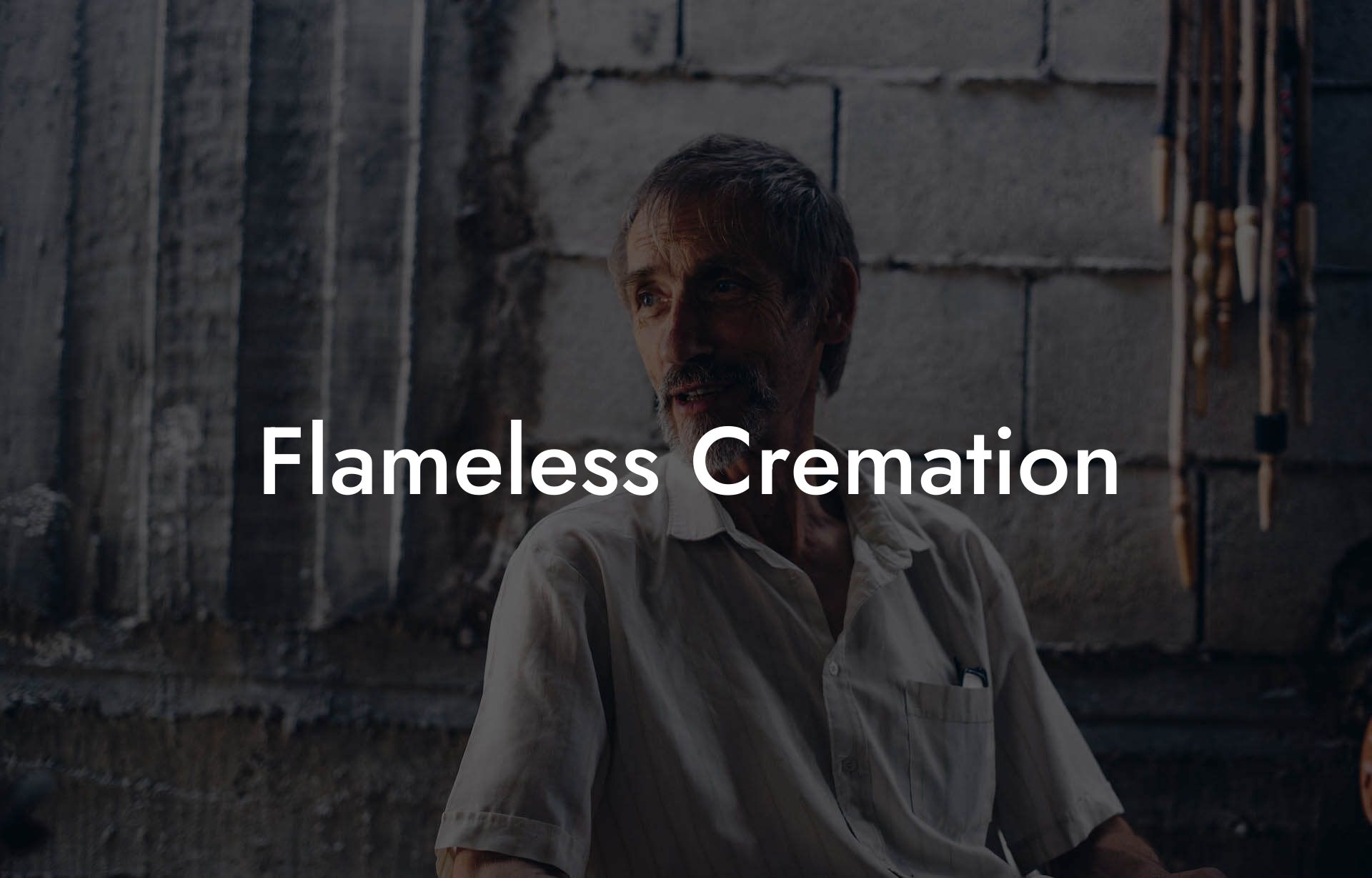Imagine a world where saying goodbye to a loved one is not only environmentally friendly but also a celebration of their life. Welcome to the world of flameless cremation, a modern, eco-conscious, and innovative approach to honoring the deceased. In this comprehensive guide, we'll delve into the benefits, process, and everything you need to know about flameless cremation.
Quick Links to Useful Sections
What is Flameless Cremation?
Flameless cremation, also known as alkaline hydrolysis or resomation, is a water-based cremation process that uses an alkaline solution to break down the body. This eco-friendly alternative to traditional flame cremation reduces the environmental impact of funeral practices while providing a gentle and respectful way to say goodbye.
Unlike traditional cremation, which involves burning the body at high temperatures, flameless cremation uses a combination of water, alkali, and heat to accelerate the natural decomposition process. This results in a faster, more energy-efficient, and environmentally friendly process.
How Does Flameless Cremation Work?
The flameless cremation process typically takes place in a specialized facility, where the body is placed in a stainless steel vessel. A mixture of water and alkali is added, and the vessel is then sealed and heated to a temperature of around 200°F (93°C).
The alkaline solution breaks down the body tissues, leaving only bone fragments and any non-organic materials, such as dental fillings or implants. The resulting liquid is then treated and disposed of in an environmentally responsible manner.
The remaining bone fragments are processed into a fine powder, similar to traditional cremated remains, which can be returned to the family for memorialization or scattering.
Benefits of Flameless Cremation
Flameless cremation offers several benefits over traditional cremation methods:
- Environmental Benefits: Flameless cremation reduces greenhouse gas emissions, uses less energy, and produces no toxic pollutants or mercury emissions.
- Energy Efficiency: The process uses significantly less energy than traditional cremation, making it a more sustainable option.
- Gentle and Respectful: Flameless cremation is a gentle and respectful way to treat the body, without the intense heat and flames associated with traditional cremation.
- Increased Flexibility: Flameless cremation facilities can be designed to accommodate a wide range of memorialization options, from traditional funerals to modern celebrations of life.
Is Flameless Cremation Right for You?
Flameless cremation may be the perfect choice for those who prioritize environmental sustainability, want a gentle and respectful process, or are looking for a unique and modern approach to funeral practices.
Consider the following questions to determine if flameless cremation is right for you:
- Are you concerned about the environmental impact of traditional funeral practices?
- Do you want a cremation process that is gentle and respectful?
- Are you looking for a modern and innovative approach to funeral practices?
If you answered "yes" to any of these questions, flameless cremation may be the perfect choice for you.
Frequently Asked Questions About Flameless Cremation
Here are some frequently asked questions about flameless cremation:
1. Is flameless cremation legal?
Yes, flameless cremation is legal in many countries and states, although regulations may vary.
2. How long does the flameless cremation process take?
The process typically takes 2-3 hours, although this may vary depending on the facility and the individual case.
3. Is flameless cremation more expensive than traditional cremation?
The cost of flameless cremation can vary, but it is often comparable to or slightly higher than traditional cremation.
4. Can I still have a traditional funeral or memorial service with flameless cremation?
Yes, you can still have a traditional funeral or memorial service with flameless cremation.
Resources and Community Support: Your Next Steps
If you're considering flameless cremation, here are some resources and community support to help you on your journey:
- Funeral Homes and Crematories: Research local funeral homes and crematories that offer flameless cremation services.
- Online Communities: Join online forums and social media groups focused on funeral practices and sustainability to connect with others who share your concerns.
- Educational Resources: Explore online resources, such as articles, videos, and podcasts, to learn more about flameless cremation and its benefits.
Remember, saying goodbye to a loved one is a personal and emotional experience. By choosing flameless cremation, you're not only honoring their memory but also contributing to a more sustainable future.

